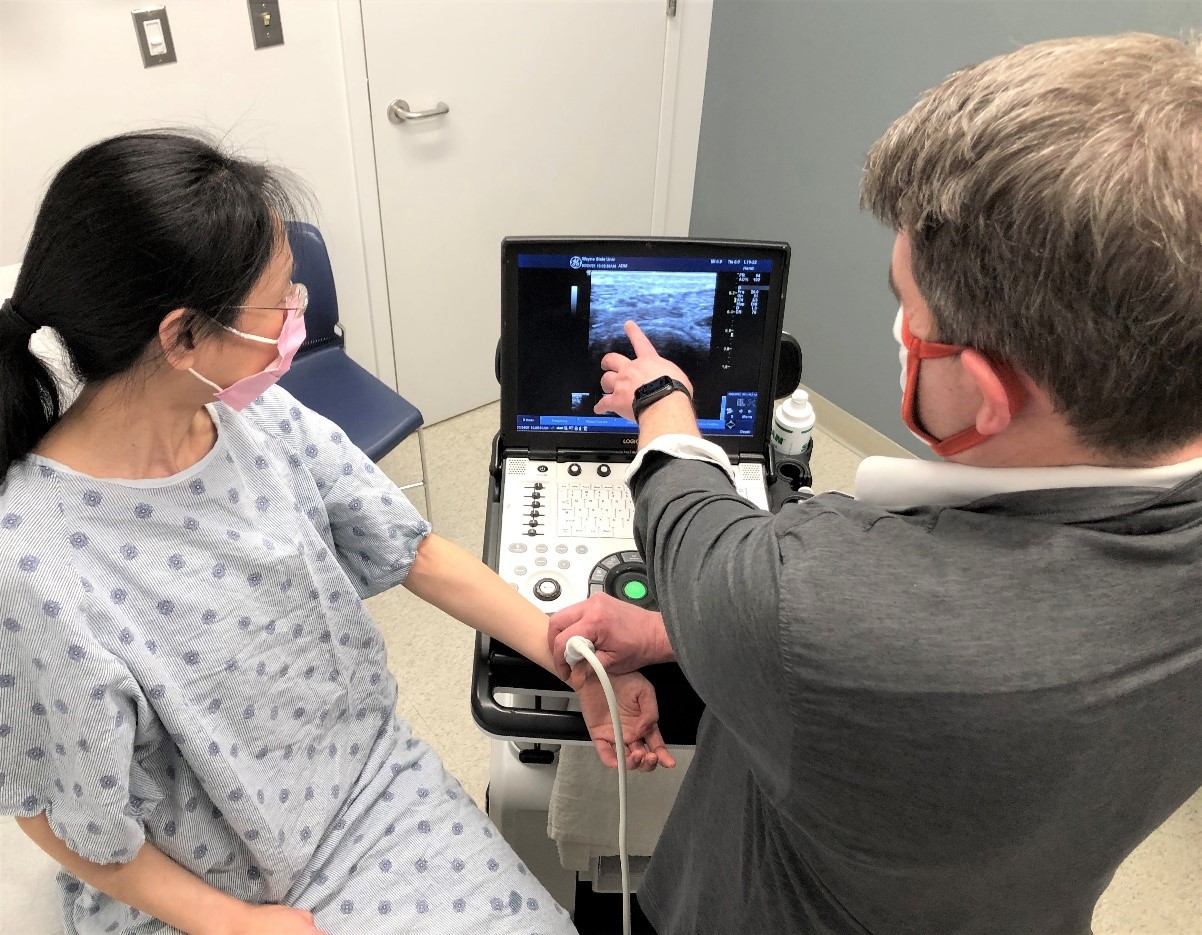Neuromuscular Ultrasound
Neuromuscular ultrasound is a technique that uses soundwaves to identify certain nerves and muscles in the body. When nerves and muscle become injured or diseased, they change in shape, size and color. These alterations are seen on ultrasound. This technique is performed in an outpatient clinical setting, is painless, does not involve radiation and takes between 5-30 minutes to perform. We are the only Neurology department in the state of Michigan that provides neuromuscular ultrasound diagnostic evaluations.

This technique is helpful in diagnosing nerve diseases such as:
- Charcot-Marie-Tooth disease (CMT)
- Amyotrophic Lateral Sclerosis (ALS)
- Multifocal Motor Neuropathy (MMN)
- Chronic Inflammatory Demyelinating Polyneuropathy (CIDP) and other variants
- Diabetic Neuropathies
- Chemotherapy induced neuropathies
- A traumatic, compression or entrapment neuropathy (ex. Carpal tunnel syndrome, etc.)
- Nerve Injuries
- Muscle diseases such as:
-
- Polymyositis
- Dermatomyositis
- Inclusion Body myositis
- Congenital Myopathies
- Congenital Muscular Dystrophies
Ultrasound is often used in combination with other electrodiagnostics such as nerve conduction studies or electromyography and the clinical exam to help localize neuromuscular diseases. In some cases, such as study of the function of the diaphragm, the thin muscle that helps us breathe, the ultrasound can be more helpful and safer due to limitations of other invasive electrodiagnostic testing. Additionally, because we can utilize ultrasound as an extension of our electrodiagnostics, we can perform our studies with better accuracy, and fewer NCS/EMG studies which can sometimes be uncomfortable.
In some types of nerve diseases, such as CIDP, ultrasound can help monitor treatment efficacy. Many studies are ongoing in other disease to determine progression or response to therapies. In some cases when the nerve is locally inflamed, we can use ultrasound to guide injections to calm the inflammation and pain.

Currently the main therapeutic use for ultrasound is in the guidance of injections and monitoring diseases like CIDP. At Wayne State University School Medicine, we are actively involved in research on how ultrasound can be used to monitor how axons are lost in peripheral nerve diseases. These types of biomarkers are desperately needed to improve clinical trials in peripheral nerve disease.
If you have any of the neuromuscular disorders listed above and would like more information on whether neuromuscular ultrasound may provide an alternative way to diagnose or monitor your condition, please contact the neuromuscular department at (313) 745-4275 to make an appointment.